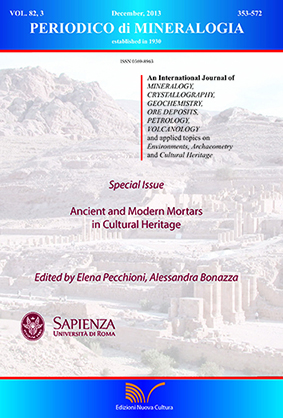Genoese intonachino plasters between the 14th and the 18th century: archaeometric analyses
DOI:
https://doi.org/10.2451/2013PM0032Keywords:
Genoa - cocciopesto - pozzolan - marmorino - surface finish - archaeometric analyses.Abstract
In the last twenty years, the authors have analyzed many samples of plaster and surface finish coming from historic buildings in the territory of Genoa (Italy), dating from the 14th to the 18th century, excluding the sintered materials used since the 19th century onwards. This research, therefore, wants to document the technique and the materials used that, through lab investigations, have ascertained different mineralogical compositions (plaster with quartz, slaked lime, cocciopesto, pozzolan, marmorino, etc.), with overall color not always white, but also colored in paste, with the addition of natural or artificial pigments, accompanied by surface treatments, which enhance the color differences between different parts of the monument. The research was carried out using reflected light microscopy techniques on polished cross sections and polarized transmitted light techniques on thin sections, integrated with FTIR spectroscopy analysis.


